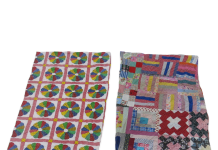Building a digital watermark to track industrial IoT hacks: Researchers have come up with code that helps companies create a digital watermark for sensitive data that can be applied across a wide range of industrial controllers. The watermark allows companies to recognize when someone is trying to attack a flow of data or inject false data, and can let operators know that that they need to shut down a process, possibly preventing damage. (IEEE Spectrum)
Veego signs a deal with Amdocs: Veego, a company I profiled back in November that helps ISPs and other service providers diagnose problems in the smart home automatically, has signed a deal with Amdocs. Amdocs will add Veego’s technology to the software it already provides to communications companies. Amdocs is also a strategic investor in Veego, so I guess that investment is now paying off. If ISPs really want to deliver a smart home, services such as Veego’s will be essential in order for them to scale. (Computer Weekly)
Smart door locks are ready to help reduce the spread of germs: Latch, a company that offers connected locks for apartment buildings, has rushed its integration with the Apple Watch so residents who live in buildings that use its locks can gain access to their buildings and public areas in the building, such as mailrooms, without having to use a touchpad or hold their phone near the door. Instead, they can use their Apple Watch to access the building. With a wave of the wrist and swing of the hip, it may soon be possible for folks to get inside their apartments without touching a lock or digging for their phone. Now if only we could stop touching our faces. (Latch)
The FCC has some tips to improve your home broadband quality: I don’t know about you, but in my house, we’re fighting over who gets to stream Disney+ and who gets to Zoom or make Skype calls. Surprisingly, the U.S. networks are mostly keeping up with the demand for more connectivity, but broadband performance is a mix of your provider’s capacity, your own network, your Wi-Fi, and your neighbors’ habits. So if you’re struggling, maybe these tips will help. Although any schedule I’ve tried to set with my family to prioritize my need for bandwidth has been met with lackluster compliance. (FCC)
The novel coronavirus is delaying 5G networks for IoT: The standards body that sets the rules for how 5G networks will operate has delayed the release of the next iterations of the 5G standards that specifically dealt with some challenges faced by the IoT. The 3GPP planned to complete Release 16 of the standard by the end of 2019, but has now pushed that out until June. Release 16 formalizes standards for ultra-reliable, low-latency communication that factory owners and others were interested in. It also takes a stab at setting standards for 5G to work in unlicensed spectrums, such as those used for Wi-Fi. As to Release 17, the 3GPP is pushing that back as well, until June 2021. The most relevant feature of Release 17 is network slicing, which should help drive operator revenue and some pretty exciting new use cases. However, given that most countries are just deploying 5G networks and the equipment is still new, this delay will have limited effects. (SDX Central)
Diligent Robotics gets $10M in funding: This Austin, Texas-based company is building a robot designed to help offload some of the stocking and other routine tasks currently handled by nurses. I actually “met” the first generation of this robot with a group of kids on a field trip, and they loved it. I’m excited the company has raised more money, and hope its vision of using automation to free up workers to handle more hands-on and human-facing tasks will help us ease gently into automation. Though given the social distancing required by COVID-19, I worry we’re about to rush headlong into it. (TechCrunch)
Lessons learned from the end of Starsky Robotics: Automation isn’t taking all of our jobs. Starsky Robotics, which was making self-driving trucks, has closed its operations. The post offers a lot of reasons, but for me, the most compelling was that the sophistication of the AI training simply isn’t there yet. Driving is just too varied for a machine to take on with supervised training. Is this the first of several reality checks to the great AI-washing of the last few years? (Medium)
Coronavirus is hitting the construction industry: Roughly one in four general contractors is seeing a halt or delay in their work thanks to the novel coronavirus, which causes COVID-19. The Associated General Contractors of America released a survey in which 28% of 909 general contractors said that they had been asked to halt or delay a project by at least 30 days. Another 22% said a supplier had notified them that deliveries would be late or canceled. This is obviously bad news for a big section of the economy, but perhaps if state building codes were updated following the pandemic it could be an opportunity to add more smart and energy-saving features to buildings that might otherwise have gone forward without them. (TEDMag)
Researchers build an AI that can track sneezes and coughs: Researchers from the University of Massachusetts Amherst have built a box that listens for coughing and sneezing in an area and tries to predict the spread of flu-like illnesses. The idea is something like this could help predict the spread of a COVID-19-style illness, but frankly I just want a box that reminds me to cough into my elbow. (Medgadget)
The post IoT news of the week for March 27, 2020 appeared first on Stacey on IoT | Internet of Things news and analysis.


































